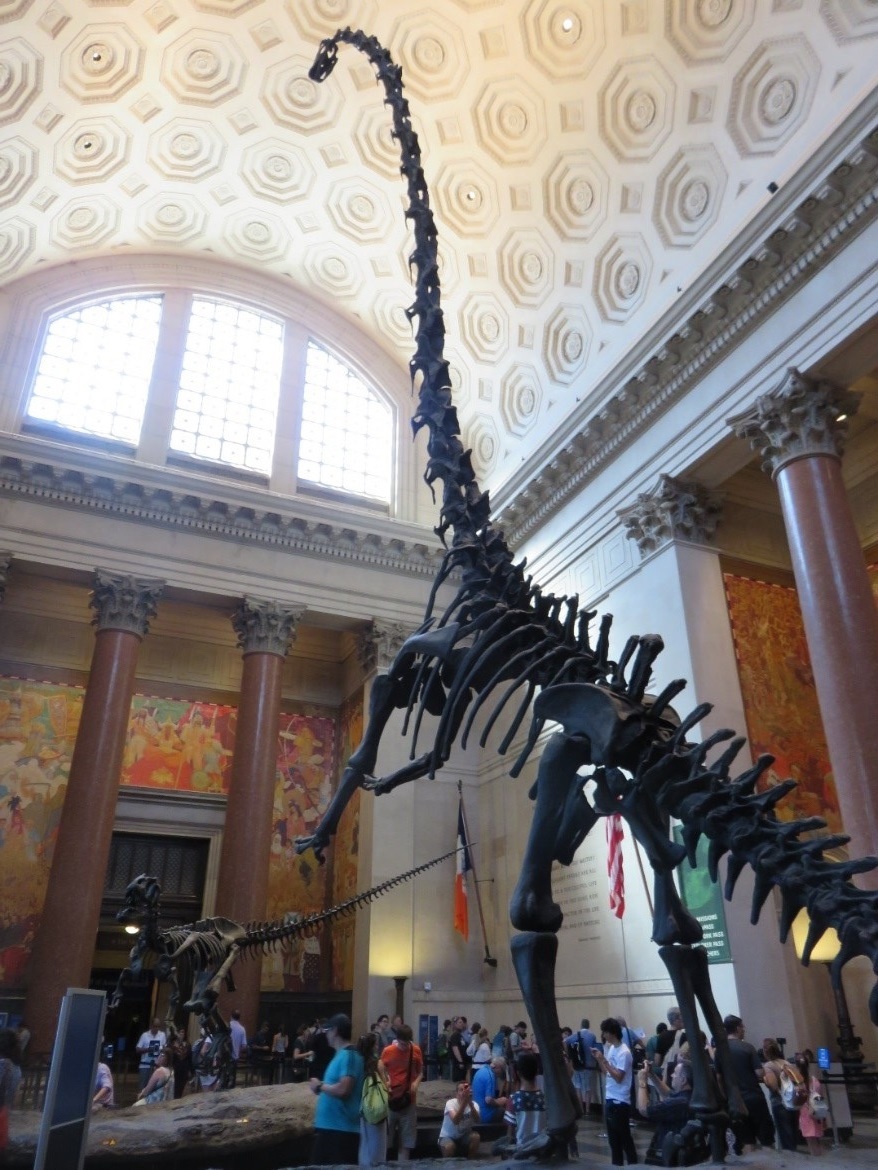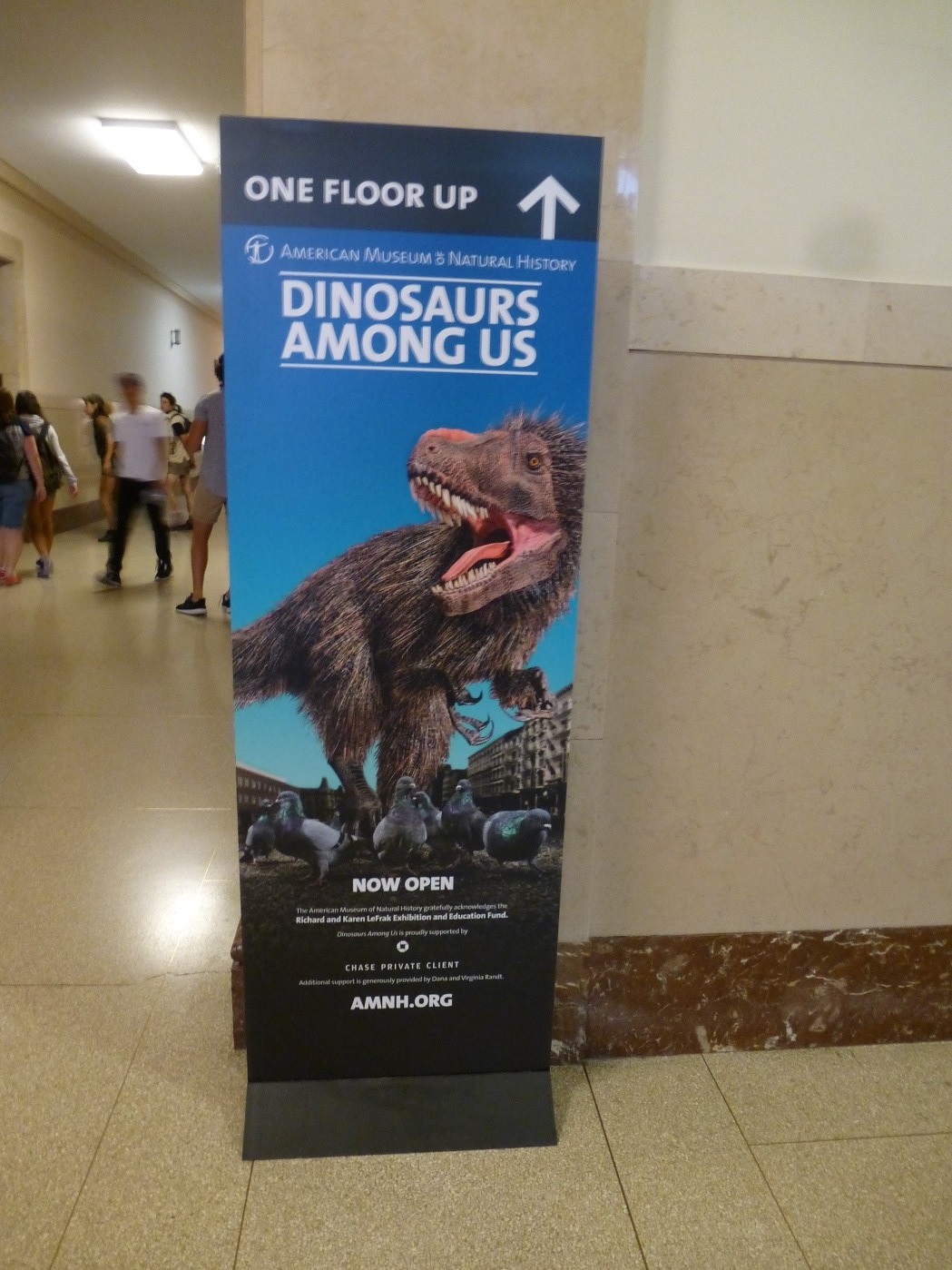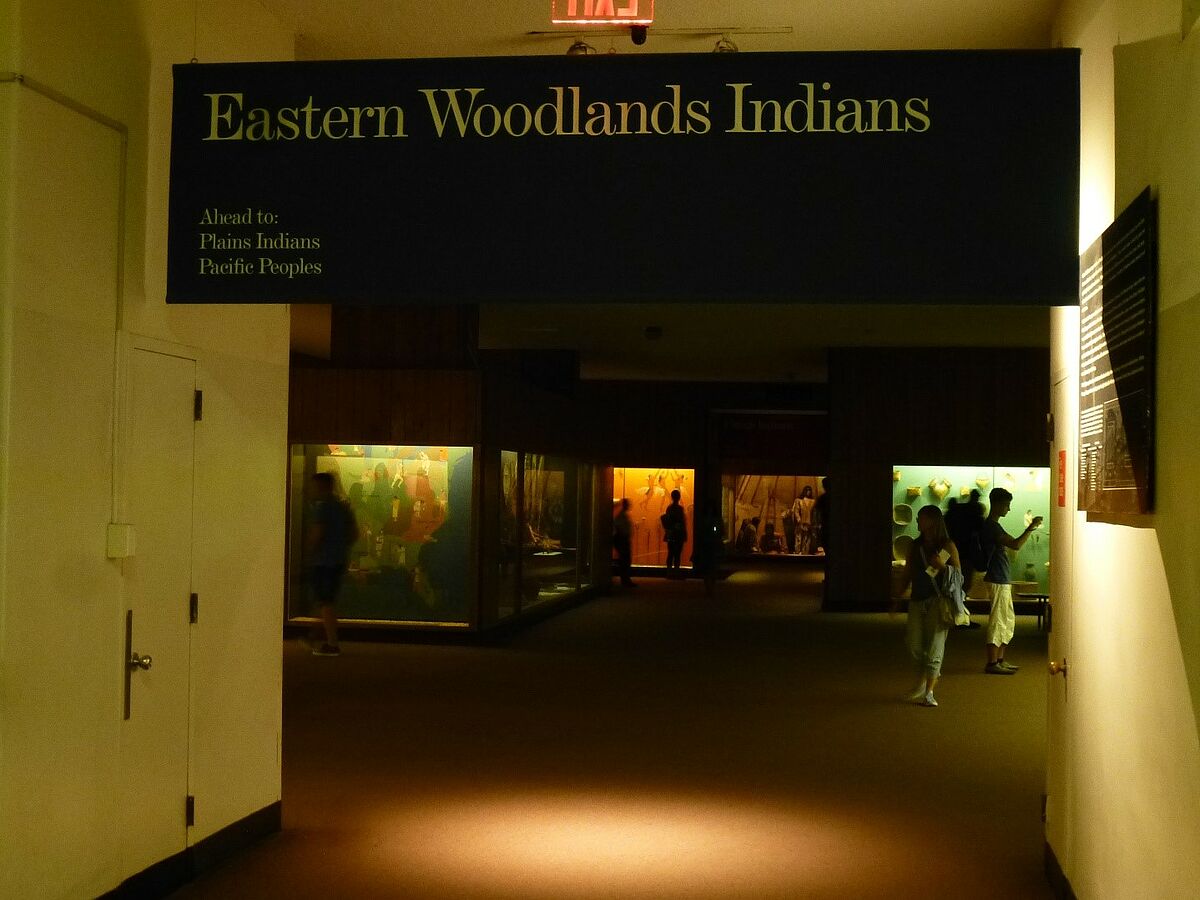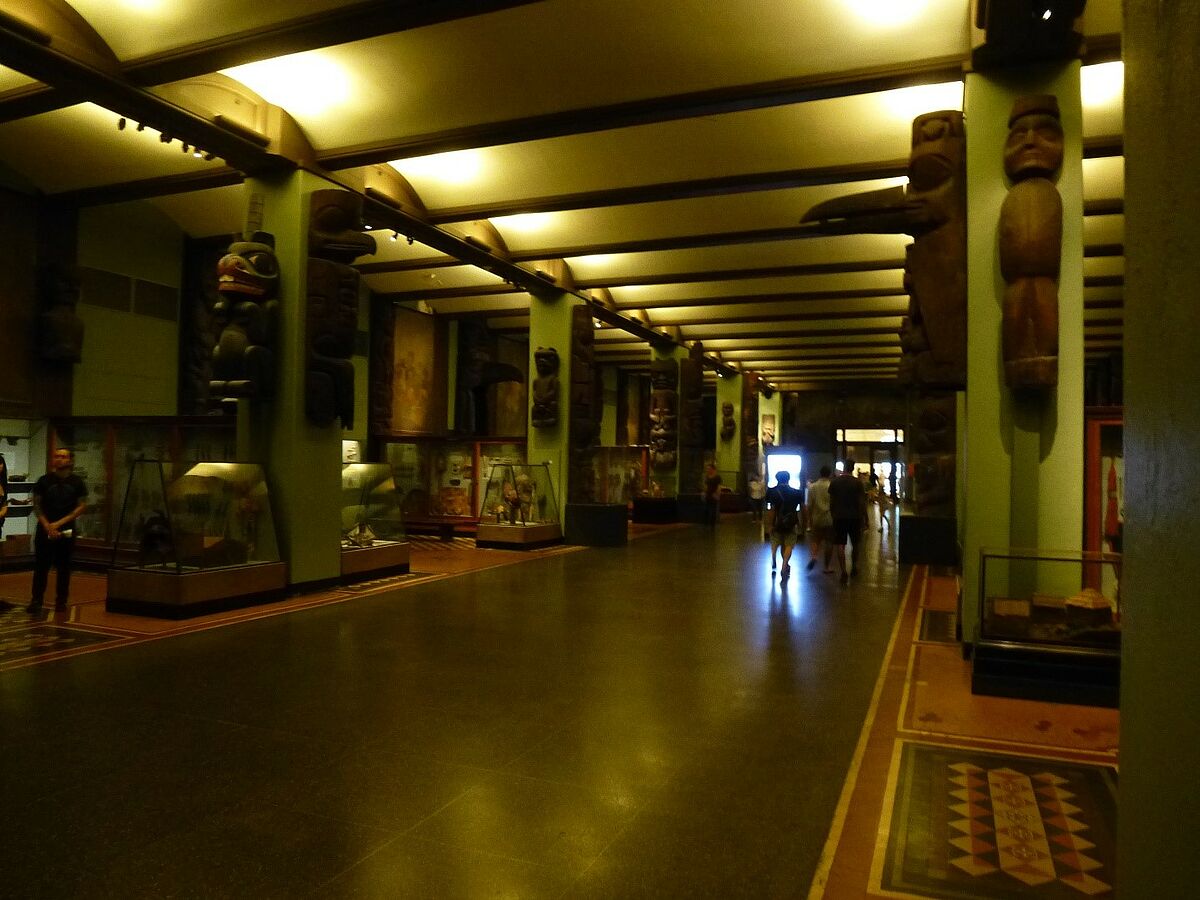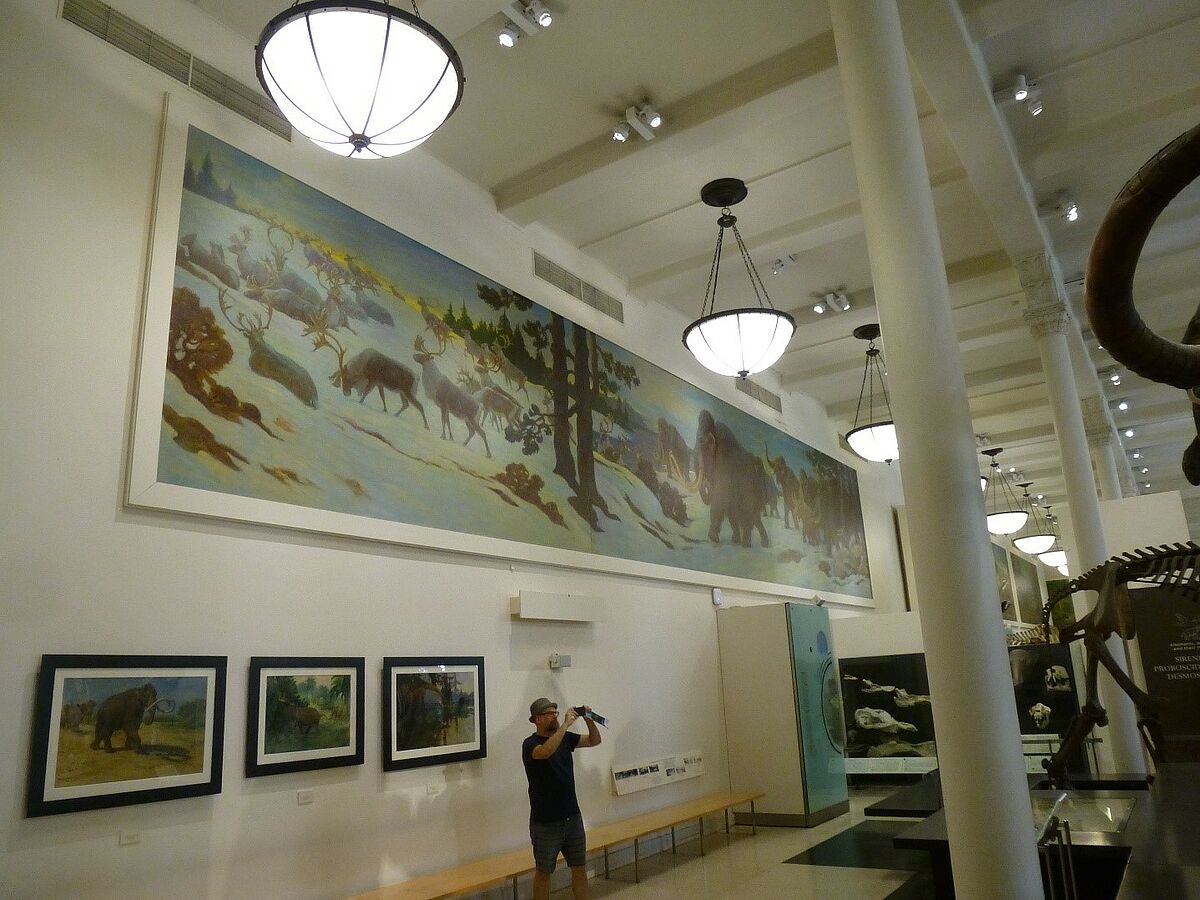A Walk through American Antiquity: The American Museum of Natural History in New York
by Alexander Bräuer, 11/15/2016.[1]
Summary
In between dinosaur fossils and geological specimens, the American Museum of Natural History in New York offers some glimpses of the construction of an American antiquity for the American public. The Halls on the Indian cultures – structured by geography – as well as certain sections in the exhibitions on pre-Columbian animals address topics which are related to questions about the construction of history under colonial influence. The Pleistocene Overkill hypothesis, for example, features in the fossil halls and buffalo hunts are depicted in the Indian halls. The observations in this article are based on a visit of the American Museum of Natural History in September 2016.
Dinosaurs are the Holy Grail for museums on natural history. They are big, fascinating, spectacular, old, and most important: they sell tickets. The collections of the American Museum of Natural History (AMNH) in New York are no exception. They are nowadays dominated by fossils, especially dinosaurs, as the entrance hall (figure 1) illustrates. Visitors must walk around at least two dinosaurs before they even have a chance to buy a ticket. Promotion, special collections, and huge chunks of the permanent exhibitions display them in every possible way, targeting especially children (and admittedly some adults – including the author of this article) and trying to transform the visit into a family experience. Other parts of the collections therefore often take on the role of a complement to the typical museum experience. They are discovered in the afternoon, after dinosaurs have lost some of their fascination due to a massive overload of fossil experience. Here, the AMNH – with its universal approach – claims to offer insights into the cultures of Asia, Africa, North and South America, and the Pacific – in spite of its name Natural History. Interestingly European cultures are not part of the permanent exhibitions. Natural History seems to include only African, Asian and American cultures of ‘prehistoric’ times and exclude ‘higher’ (and much earlier) civilizations like the Romans or Greek. These focal points and gaps represent in many ways the colonial origins of the AMNH. Under these colonial assumptions indigenous cultures of Asia, Africa, America, and the Pacific were displayed because they were considered to exist on the verge of extinction – similar to the extinct animals displayed in the fossil halls. Around 1900 when the structure of this and other museums was conceived, Anglo-American modernity – inspired by the ideology of progress – considered itself as the pinnacle of human development destined to replace non-modern, i.e. ‘primitive’, cultures. Their display also fulfilled the purpose of assuring modern culture of its own superiority and modernity, deflecting an unspeakable uncertainty about that chosen status.
The AMNH displays several collections on the indigenous people of North America, namely the “Hall of Eastern Woodlands Indians”, the “Hall of Northwest Coast Indians” and the “Hall of Plains Indians”.
Thus, the AMNH plays an important role for the construction of a public image of an American antiquity – the very topic of this website. The following report will therefore focus on the part of the exhibitions dealing with Native Americans and ignore the extensive collections of prehistoric minerals, plants and animals since they rarely include human history. As mentioned before, the collections on Native Americans follow a regional approach and are divided into several cultural areas. Only a small part of these collections is dedicated to the Indian culture before the European settlement. The focus of the collections lies on the state of Native American culture at the time of first contact and in the immediate aftermath, thus by this selection diminishing the role Native Americans played in the millennia-long pre-Columbian history of North America. Furthermore, the need to protect the artifacts from too much light gives the collections on Native American culture a gloomy appearance (figure 3 & 4) creating an arduous experience especially since the dinosaur exhibitions are usually illuminated to perfection.
Colonial ideas are still very present in most of the collection. A sign on “cultural contact” in the Pacific Hall, for example, reads: “Contact between a dominating, complex society and a less complex, native society inevitably leads to the latter undergoing the greater change. Some native societies adapt well to the contact situation.” The assumption that European
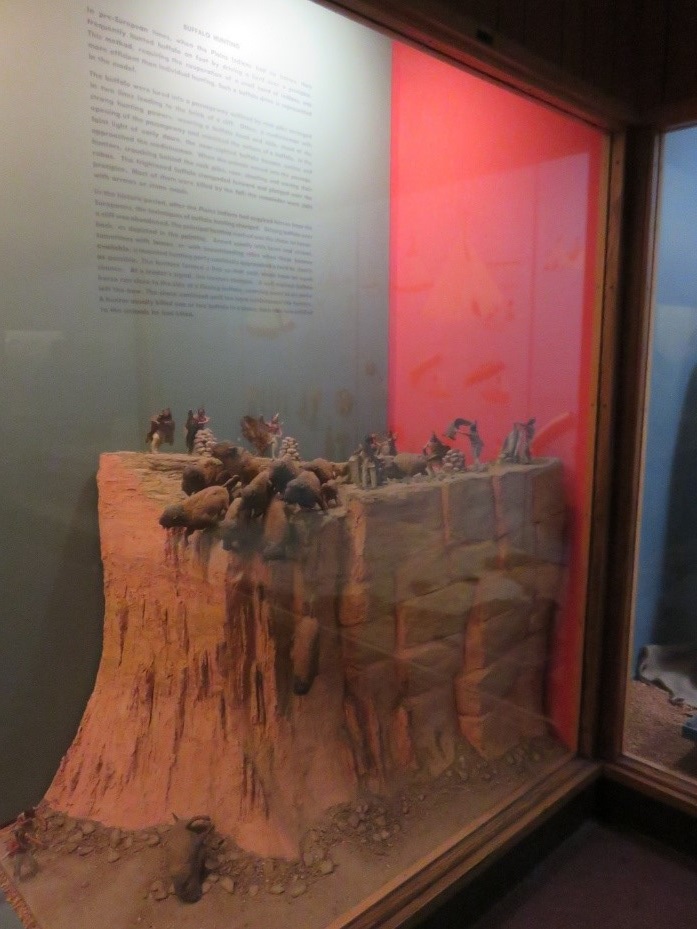
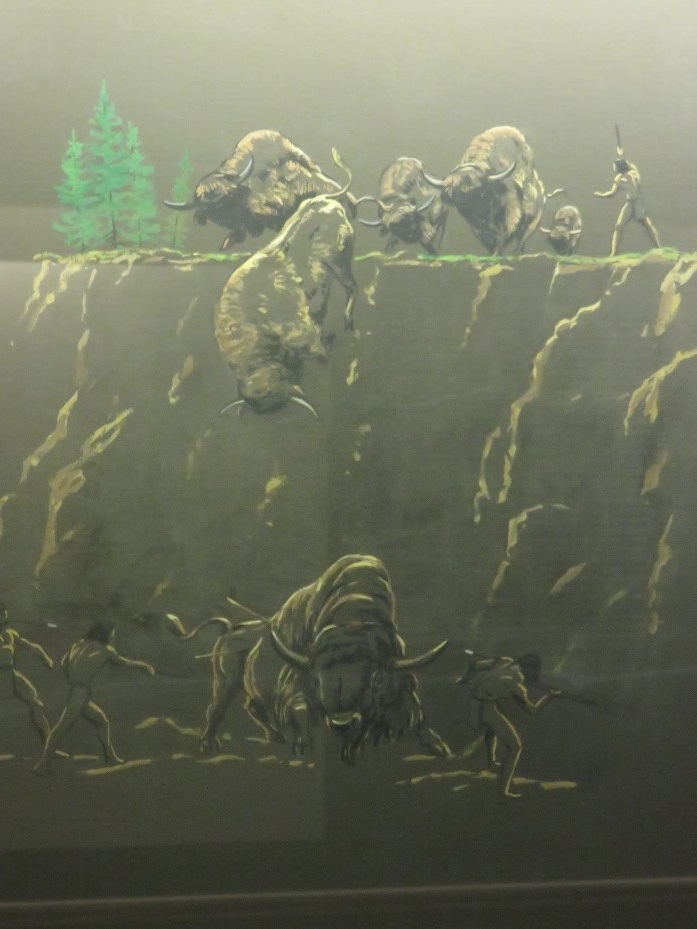
cultures are more complex (and powerful) than indigenous cultures underlies not only the Pacific collection. The introductory text on the Indians of the Eastern Woodlands combines a positive population development in the recent decades with a more modern and European way of life: “The Eastern Woodlands Indians are now increasing in population following a period of decline and are participating fully in modern Canadian and American life.” Naturally, these colonial ideas find their way into the representation of American antiquity by the AMNH.
Besides the general problem that human artifacts are mixed with fossils and minerals – that indigenous cultures in the Americas are deemed part of natural history, not of human history – the AMNH features colonial mythos such as the Pleistocene Overkill hypothesis. This popular theory postulates that Paleo-Indians were responsible for theextinction of the Pleistocene megafauna in America – without considering man’s contribution to the Pleistocene extinctions in other parts of the world, including Europe. The debate surrounding the hypothesis is characterized by depictions of Native Americans as un-ecological and bloodthirsty savages overrunning the continent to satisfy their appetite for meat. The AMNH discusses the hypothesis on two inscriptions in the fossil halls. One inscription describes the role of Paleo-Indians in the extinction of the ground sloths as an “open question”, another more general text on the other hand states that “Large land mammals, abundant and mostly lacking other animal predators, were efficiently hunted by early inhabitants of South America and must have been basic to human subsistence. Eventually, overhunting of these big Pleistocene mammals probably contributed to their extinction.” The message of the unecological Indian is further enhanced in the exhibitions by the prominent depictions of mass killings conducted by historical Native Americans (figure 4 & 5).
Although the Pleistocene overkill hypothesis is not mentioned in the context of the depictions, the picture of a cruel and excessive interaction with the environment by Paleo-Indians is created. Furthermore, the colonial past of the AMNH is still very present in the exhibitions as the example of Charles R. Knight, an artist famous for his paintings of dinosaurs and prehistoric animals at the beginning of the 20th century, shows. Knight based his highly popular paintings on the fossils on display in the AMNH and his paintings were and are until today displayed in close proximity to their models, thus reviving the otherwise rather plain bones. Knight, like other artists of the period, popularized scientific and often Darwinistic ideas in mass media and museums. These ideas were pervasive and often swayed between the natural selection of the fittest animals and the competition between human races.
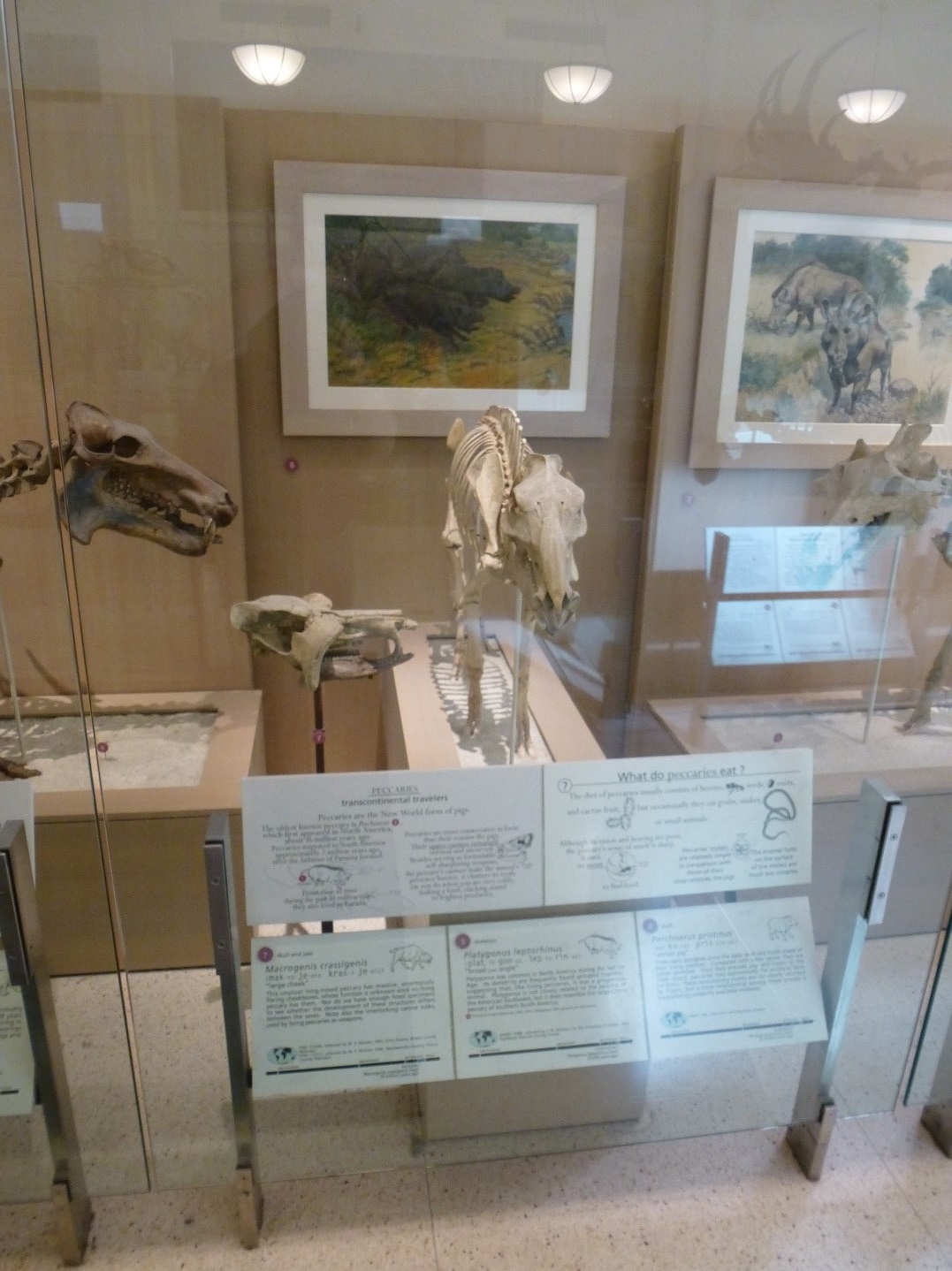
Another trace of the colonial past in the AMNH are the origins of many fossils. A plaque in the fossil halls commemorates Henry Fairfield Osborn who popularized and modernized the AMNH in the late 19th and early 20th century as one of the “Personalities of Paleontology.” Osborn was known for his modern style of presenting museum objects, but also implemented a professional and well-working network of collecting fossils. The AMNH was thus able to profit from fossil hunting expeditions and thereby directly benefitted from the “Bone Wars” and their aftermath. The whole collection thus owes its existence to the dispossession of, and genocidal wars against, the Western Plains tribes in the second half of the 19th century.
Overall, presentations of American antiquity and ‘prehistory’ are overshadowed by the focus on dinosaur fossils in the exhibitions of the AMNH. However, this observation does not render them irrelevant. Indeed, as this article shows, the dinosaur halls have their own roots in the colonial project and the halls of Indians offer a few glimpses of the coloniality of the construction of an American antiquity.
NOTES
[1] Visit to the American Museum of Natural History at the 09/14/2016.
ILLUSTRATIONS
Figure 1-8: Bräuer, Alexander. 09/2016. JPEG. © Alexander Bräuer.

